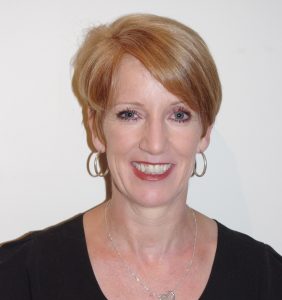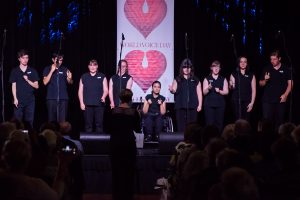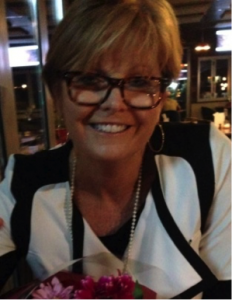Spreading The Music with Key Word Sign.
Since its inception in 2014, the Nordoff-Robbins Key Word Sign Choir, under the guidance of Meagan Rudd, has become a regular feature at a variety of events throughout Sydney. The AVA had the opportunity sit down with Meagan on the lead up to their upcoming World Voice Day performance to learn more about the choir.
Can you tell us a bit more about how and why the Key Word Sign Choir began?
I’ve always been fascinated by all forms of sign communication and have studied them for many years. I work in Special Education in a high school setting, so many of the students have used or been exposed to Key Word Sign as a means of communication since early intervention. For me, the idea of forming a Key Word Sign choir began as a way to enhance the students’ communication skills by increasing their “sign” vocabulary in a fun way. From the outset the students loved it, I loved it and their sign vocabulary improved noticeably.
How long has the Key Word Sign Choir been up and running for?
After offering Key Word Sign choir as an extra-curricular activity for many years at school, a parent of a graduating student who particularly loved Sign Choir asked me if I knew of any similar choirs her daughter could join in the community. After some research I wasn’t able to find anything I could refer her to, so the idea of forming a Key Word Sign choir for young adults in the community started to take shape. As I’d been associated with Nordoff-Robbins Music Therapy Australia for many years, the inception of their Community Music Program was the perfect opportunity to pitch the idea of including a sign choir in the program and in 2014 it became a reality and has been going strong ever since.
How has the relationship between Key Word Sign within music and popular culture developed over the years?
The concept of using Key Word signs to perform song lyrics is not a new one but has mainly been confined to preschool & early intervention settings using songs suitable for preschoolers. What I wanted to offer was the opportunity for young adults to learn to sign the lyrics of songs that were age appropriate for them. We currently have a repertoire of more than 80 songs by artists such as Katy Perry, Pink, Sheppard, One Direction, Ed Sheeran, Miley Cyrus & Bruno Mars as well as some classics by ABBA, the Beatles & Queen, (& songs from nearly every Disney musical ever made). The songs we choose to learn are very much driven by the choir members themselves.
Are there any other choirs like this around Australia and the world?
There are quite a few choirs in Australia & around the world using the sign language of the Deaf community of their country (AUSLAN is the language of the Australian Deaf community). Some schools & preschools teach individual songs in Key Word Sign but I don’t know of any other Key Word Sign choirs in Sydney or NSW that are open to people of any age or ability.
Can you share any favourite moments or memories of your time with the Key Word Sign Choir?
Being part of the Key Word Sign choir gives these young adults the opportunity to showcase their unique skills by performing at mainstream events which otherwise might not be available to them. My favourite moments are watching them blossom when they perform and seeing them bask in the audiences’ applause. It never fails to bring a smile to my face (and a tear to my eye). Among the choir’s most memorable moments are performances at various events with well known Australian artists Melinda Schneider & David Taylor. The choir had the privilege of being on stage with them, signing the song with the artist as they sang.
How did you get involved with World Voice Day and where and when can we catch the Key Word Sign Choir performing?
The choir first became involved with World Voice Day in 2015 through our affiliation with Nordoff-Robbins music therapy Australia, who is one of the sponsors of the annual event. The choir also performs regularly at a variety of other events throughout the year such as eisteddfods, festivals, fairs, Carols nights & events celebrating International Day for People with Disabilities.
What inspires you to continue working with the Key Word Sign Choir?
My inspiration to continue working with the Key Word Sign choir is, quite simply, the joy the choir members give me every time we meet. They’re enthusiastic, talented, funny, cheeky and great to be around. It’s my favourite time of the week and seeing each choir members’ confidence and self-esteem grow never fails to make my day.
Thanks to Meagan and each of the members of the Key Word Sign Choir for their time and sharing their talent with Australia.
The Nordoff-Robbins Key Word Sign Choir is performing at the World Voice Day event in Penrith, “Voices in the Valley”, at the Joan Sutherland Performing Art Centre on Saturday 7th April 2018 7:30 pm. Tickets can be purchased here: http://thejoan.com.au/whats-on/voices-valley-world-voice-day-2018/
“Unless stated otherwise, this article represents only the views of the author and not the views of the AVA”





